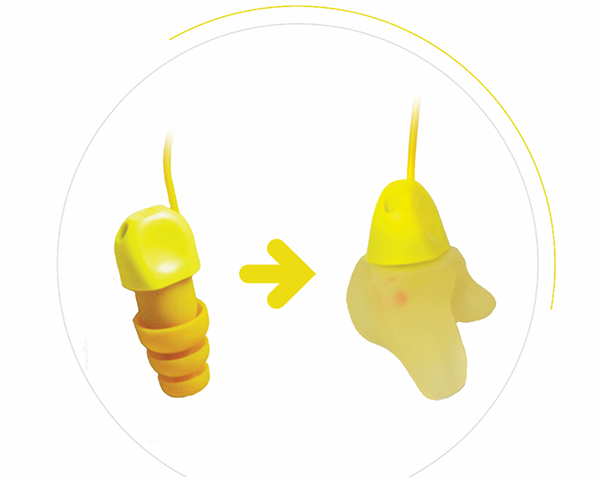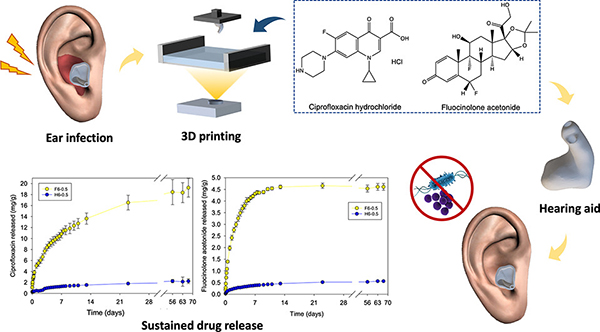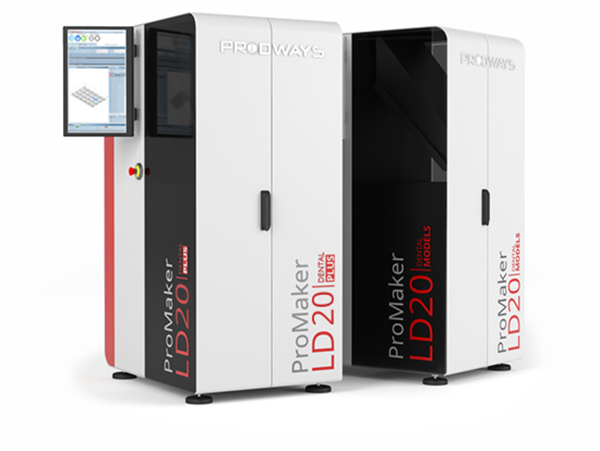Through taking control of the firm, Prodways anticipates being able to “accelerate the growth” of its custom hearing aid business, which it believes to have “strong development potential.” Due to the complementary nature of the companies’ portfolios, Prodways also expects its new acquisition to benefit from its 3D printing expertise, in a way that could help broaden the technology’s clinical adoption.

△Auditech Innovations’ EarPro hearing protection device. Image via Auditech Innovations.
Moving beyond dental 3D printing
Prior to being Spun-off by Groupe Gorgé in 2021, Prodways established a Selective Laser Sintering (SLS) and Digital Light Processing (DLP) portfolio that has gained significant traction in the dental market. Last year, the firm received a contract from a US customer to 3D print up to a million dental aligners per year, its largest order to-date, which saw it sell a total of eight MOVINGLight DLP systems.
With its business continuing to expand, generating 37% more revenue in Q1 2022 than it had a year earlier, Prodways has increasingly begun to look at acquisition opportunities. In July 2021, its then-parent firm Groupe Gorgé bought Creabis, a 3D printing bureau which has started to generate cross-orders since its integration.
Back in 2017, Prodways also acquired a 75% stake in Interson-Protac before buying Surdifuse-L’Embout two years later, to expand into the 3D printing of hearing aids and ear protection gear. Having absorbed the two entities, which generate €10 million in annual revenue, into its business, the firm says it has proven its ability to “integrate companies effectively” and identify “operational synergies.”
△Prodways’ ProMaker LD20 3D printers. Image via Prodways
Expanding further into audiology
Based in Northern France, Auditech Innovations is a developer of audiological products, designed to help companies that operate in noisy environments provide hearing protection for their employees. At present, the firm’s portfolio includes the EarPro, EarTech and AI filters, with each being designed to cancel out different frequencies and sound levels, ranging from ambient noise to loud spikes.
Auditech Innovations supplies a diverse base of more than 300,000 users operating in various industries, via a network of French partners and sister brands. Through this model, the company generated sales of around €3 million in 2021, and achieved an operating margin similar to that of Prodways itself, but it’s believed that it could now expand its operations by working with its new parent firm.
In particular, Auditech Innovations is set to benefit from Prodways’ experience in using digital manufacturing across the audiology workflow from impression to part production. It’s also understood that Auditech Innovations will now deploy 3D printing within its operations at a far greater scale, enabling it to create high-performance hearing protection that’s adapted to the morphology of each user.
Merging the companies is expected to yield operational synergies as well. Not only is the combination of the firms’ distributor networks set to expand Prodways’ accessible client base, but it should also allow them to order materials together, improving their profitability. Moving forwards, Prodways ultimately believes its acquisition will “strengthen its position in an attractive, high value-added market.”

△Researchers at UCL have demonstrated the feasibility of manufacturing hearing aids loaded with two different drugs. Image via UCL.
AM in audiology: an advancing field
Prodways may have become one of the early leaders in audiology 3D printing, but the technology remains at a relatively early stage of development, in that it continues to be the subject of intensive R&D. At University College London (UCL), researchers have sought to develop 3D printed antibacterial hearing aids, capable of preventing ear infections from forming after prolonged usage.

△3DP4ME and World Wide Hearing, by developing a mold from the 3D data of the ear and using the collected digital data to build a 3D model in real time
In the past, 3DP4ME and World Wide Hearing have also tried to raise $200,000 to bring 3D printed hearing aid molds to the Middle East. Using any funding raised, the organizations aimed to visit patients in their homes, villages and refugee camps to collect data, before going on to SLA 3D print and deliver the noise-canceling devices directly to them.




























 Home
Home Telephone
Telephone Message
Message







